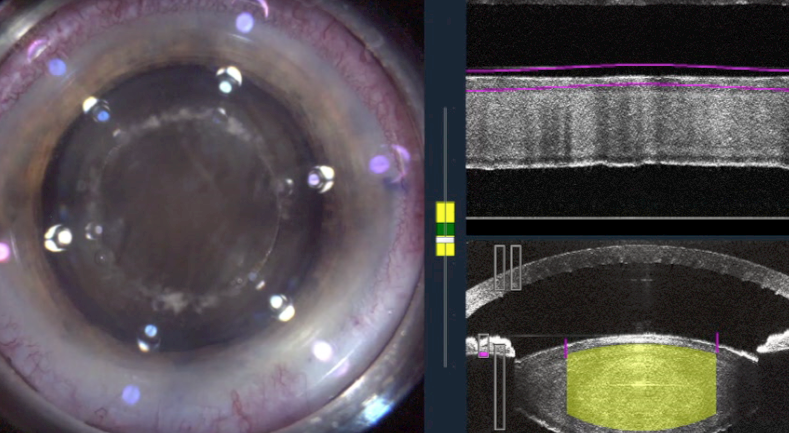The laser precision is equally useful in wound creation. The precise openings allow the entry and exit of instruments and insertion of the pi without undue stress and consequently inadvertent enlarging of the wound. This prevents wound leakage at the end of the case and faster healing.
 Let us look at the splitting of the lens by laser. It is important to realize this is done without any stress on the capsular bag or the zonular support system.
Let us look at the splitting of the lens by laser. It is important to realize this is done without any stress on the capsular bag or the zonular support system.
The opening in the lens bag or capsulorhexis is made first. This is followed by the patterned breakup of the lens. It can be cut into 2, 4 or 6 pieces. The center core may be delineated too. The depth of these lenticular cuts can again be controlled.
The depth of the cuts can be controlled in real time. The energy is delivered from the bottom towards the top. This allows gas generated by conversion of the lens material into plasma to escape as well allow the subsequent beam to work without interference from the gas bubbles. The option till now was to use sound energy. This can cause inflammation and affect the functioning of the cornea. In dense cataracts the bottom is difficult to perceive so the capsule can be accidentally ruptured. Again, the real time display and the ability to be precise and avoid the bottom of the bag is a boon when using the laser for cataract or Prelex procedure. Lets talk about breaking these hard lenses. It’s a real pain for the surgeon and patient alike to work on these cataracts with sound wave technology. It takes times and a lot of energy to accomplish this with traditional technology. This is where progress in laser technology will help even more in the future.